Principal Investigator |
||
|---|---|---|
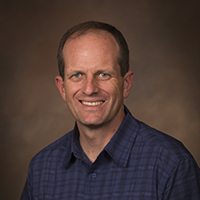 | Bruce GaleProfessor & Chair Mechanical EngineeringMerit Medical Systems Inc. Endowed Professor Director, Center of Excellence for Biomedical Microfluidics Office: 3711 SMBB/1580 MEK E-mail: gale@mech.utah.edu Phone: (801) 585-5944 Google Scholar Citations | |
Senior Researchers |
||
|---|---|---|
 | Himanshu Sant - Research Associate ProfessorResearch Areas: Pathogen detection, exosome separations, and miniature medical devices |
|
 | Greg Liddiard - Research AssociateResearch Areas: Automated microfluidic instruments, rapid-change microfluidic interfaces, metatranscriptomic sample prep, pathogen detection, high sensitivity measurement of PFAS, automated microfluidic design, and surgical devices. |
|
Current Graduate Students |
||
|---|---|---|
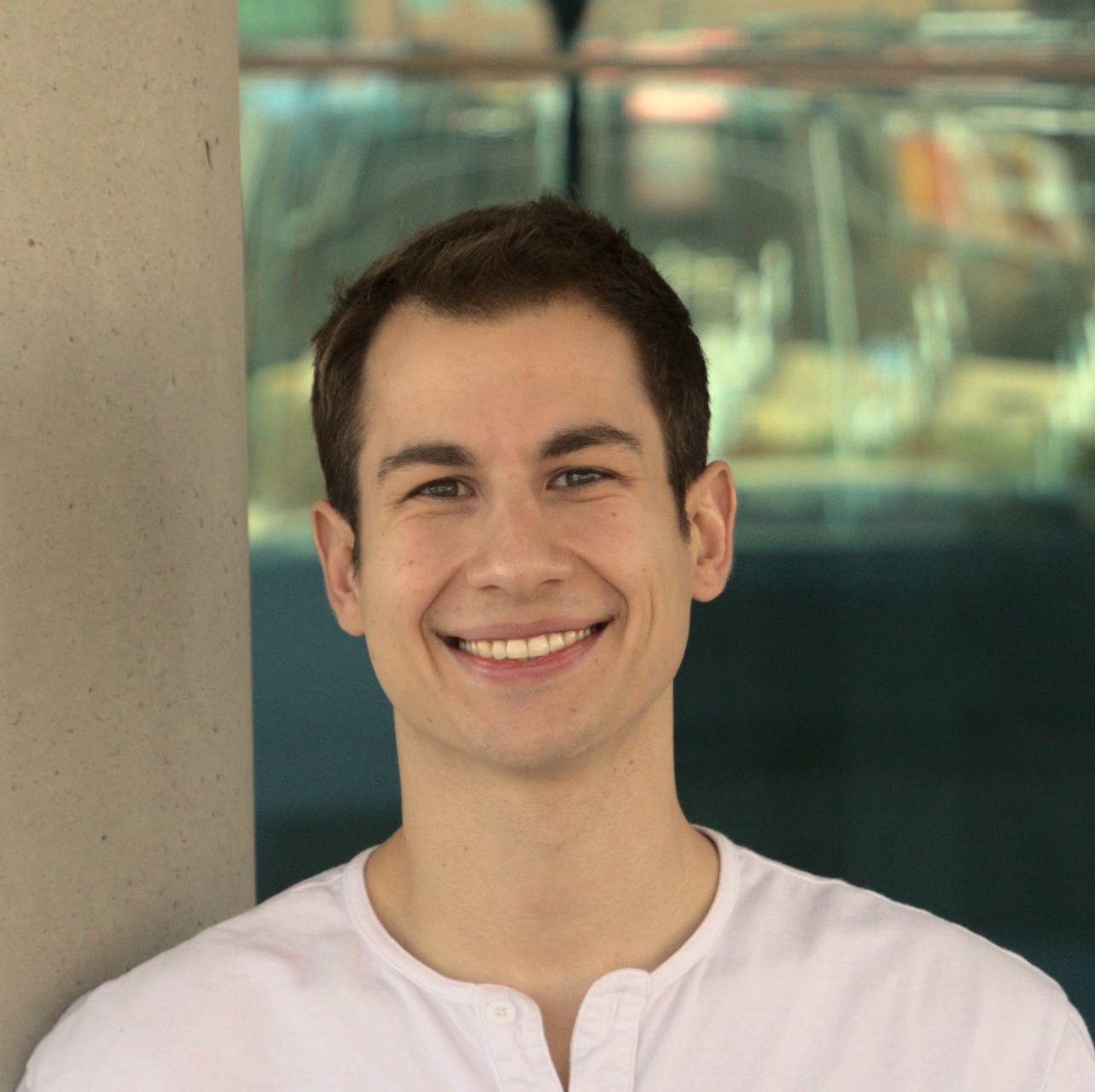 | Matt D. Nelson - Ph.D. Candidate (Biomedical Engineering)Research Area: Matt is interested in microphysiological systems (MPS), which are microfluidic devices that better recapitulate cellular microenvironments through the incorporation of mechanotransduction and physiologically relevant biomaterials. He is specifically interested in creating a model of the distal lung by combining additive manufacturing techniques with the integration of natural extracellular matrix membranes.(Matt on Google Scholar) | |
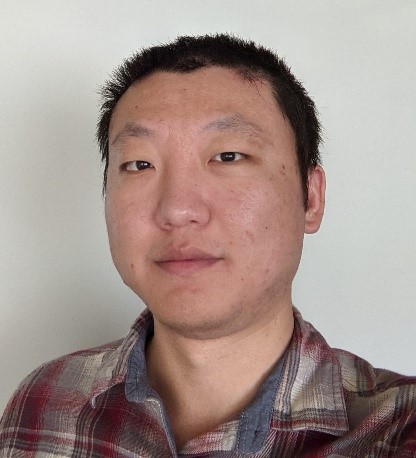 | Yunhao Peng - Ph.D. Candidate (Mechanical Engineering)Research Area: Peng is working to apply electric impedance flow cytometry to inertial microfluidic to detect and sort cells including bacteria within a heterogeneous population. This technology has the potential for assisted reproductive technology while providing an alternative to the gold standard (flow cytometry) with unique advantages including label-free, low-cost and chip-based operation. | |
 | Brady Goenner - Ph.D. Candidate (Mechanical Engineering)Research Area: Brady's research involves developing an automated system to design microfluidics. As microfluidics have matured, many innovative technologies have been created to make it easier to fabricate more intricate systems. Brady is interested in developing tools to enable engineers to take advantage of these advances. Much like microelectronics, microfluidics can be broken down into a set of functional components with simpler equations. His Ph.D. work is on understanding how to encapsulate the necessary equations and solve them for microfluidic systems so we can simulate them efficiently at a system level. He is also interested in the application of 3D printing for fabricating microfluidic devices. He hopes to transform healthcare through combining these technologies which can facilitate the deployment of new microfluidic developments. |
|
 | Sabin Nepal - Ph.D. Candidate (Mechanical Engineering)Research Area: Sabin's research focuses on inertial microfluidics, where he has been designing and developing commercially viable microfluidic devices for cell preparation and separation that caters to processes involving in-vitro human spermatogenesis and intrauterine insemination. His past work involves a reconfigurable liquid metal antenna and an automated microfluidic instrument for on-chip bioassays, among others. |
|
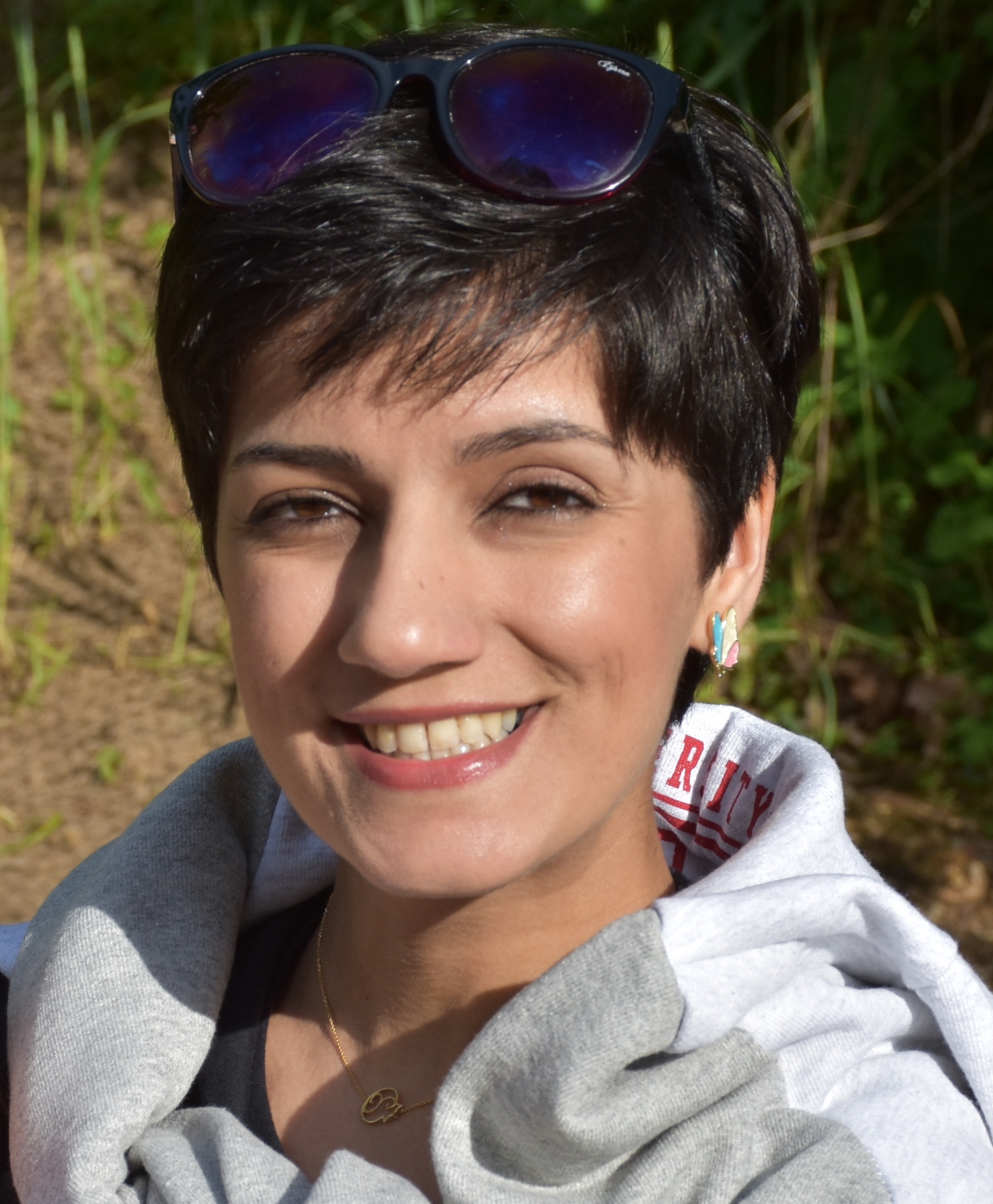 | Bahareh Kazemi - Ph.D. Candidate (Mechanical Engineering)Research Area: Bahar's research focuses on the development of cost-effective microfluidic devices as alternatives to conventional large liquid handling systems. These devices are specifically designed for the metatranscriptomic (RNA) analysis of clinical specimens, showcasing their potential utility in enhancing precision and efficiency in clinical research. | |
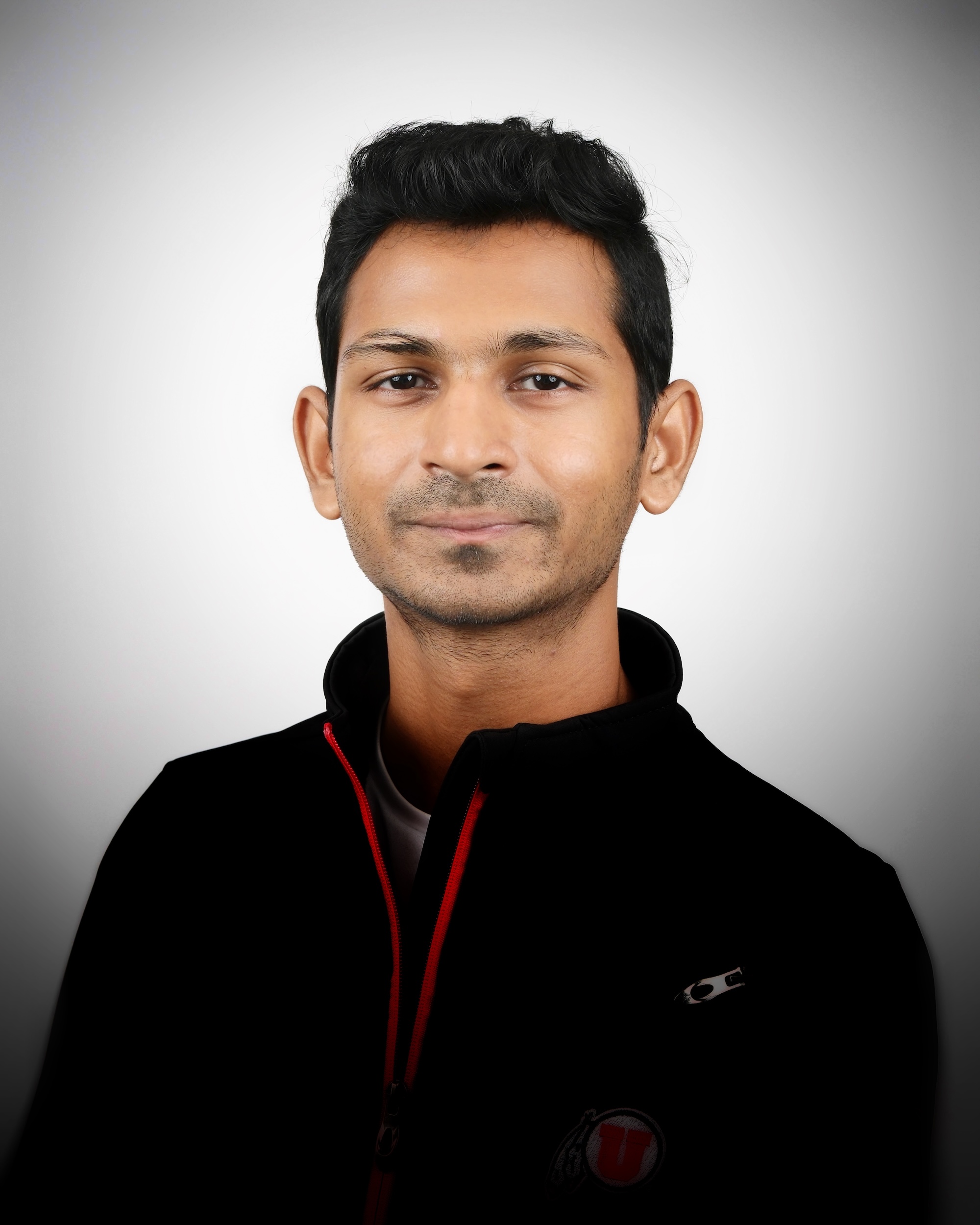 | Munawar Jawad - Ph.D. Candidate (Mechanical Engineering)Research Area: Munawar’s primary research areas include Lab-on-a-chip (LOC) devices and 3D printing. His prior work focuses on developing an automated microfluidic instrument that can perform on-chip RNA extraction, which is then used for sequencing. Currently, Munawar is working on developing a self-powered, point-of-care (PoC) device for rapid detection of SARS-CoV-2 antibody in user blood.(Munawar on LinkedIn) | |
 | Amirhossein Razaghian - Ph.D. Candidate (Mechanical Engineering)Research Area: Amir has a solid background in CFD and hydrodynamics, Amir's research focuses on microscale applications involving computational fluid dynamics (CFD) and fluid–structure interaction (FSI) in biomedical microfluidics. He has developed COMSOL-based FSI models to optimize 3D-printed lung-on-a-chip systems that replicate alveolar-capillary dynamics, supporting applications in drug discovery and therapeutics. His previous work includes prototyping semi-rigid bandages that stiffen on demand via fluidic glue activation for emergency care, and designing low-dead-volume flowcells suitable for DNA sequencing. Currently, he is applying microscale hydrodynamics to optimize an HPV diagnostic kit with blister-actuated fluid delivery, integrated valves, and a thermal activation system. He is also advancing CFD-FSI simulations to study nanoparticle transport under dynamic conditions within lung-on-a-chip models.(Amir on Google Scholar) | |
 | Ata Ullah - Ph.D. Student (Biomedical Engineering)Research Area: Ata focuses on the fabrication of microfluidic devices for motile sperm sorting, which can potentially answer questions related to human evolution and infertility. He is also working on in-vitro spermatogenesis to address male infertility. | |
 | Shamima Juthi - Ph.D. Student (Mechanical Engineering)Research Area: Shamima's research focuses on developing frequency-reconfigurable liquid metal patch antenna that can be tuned by applying pneumatic pressure. | |
 | Afroza Tabassum Akhi - Masters Student (ECE)Research Area: Afroza’s research focuses on developing an automated system by designing a large-scale component to improve the software for the future to design microfluidics. Her Prior work was focused on advancing Agglutination Categorization in Medical Images Using SVM and Multilevel Classification Techniques. She is also interested in the application of 3D printing for fabricating microfluidic devices. | |
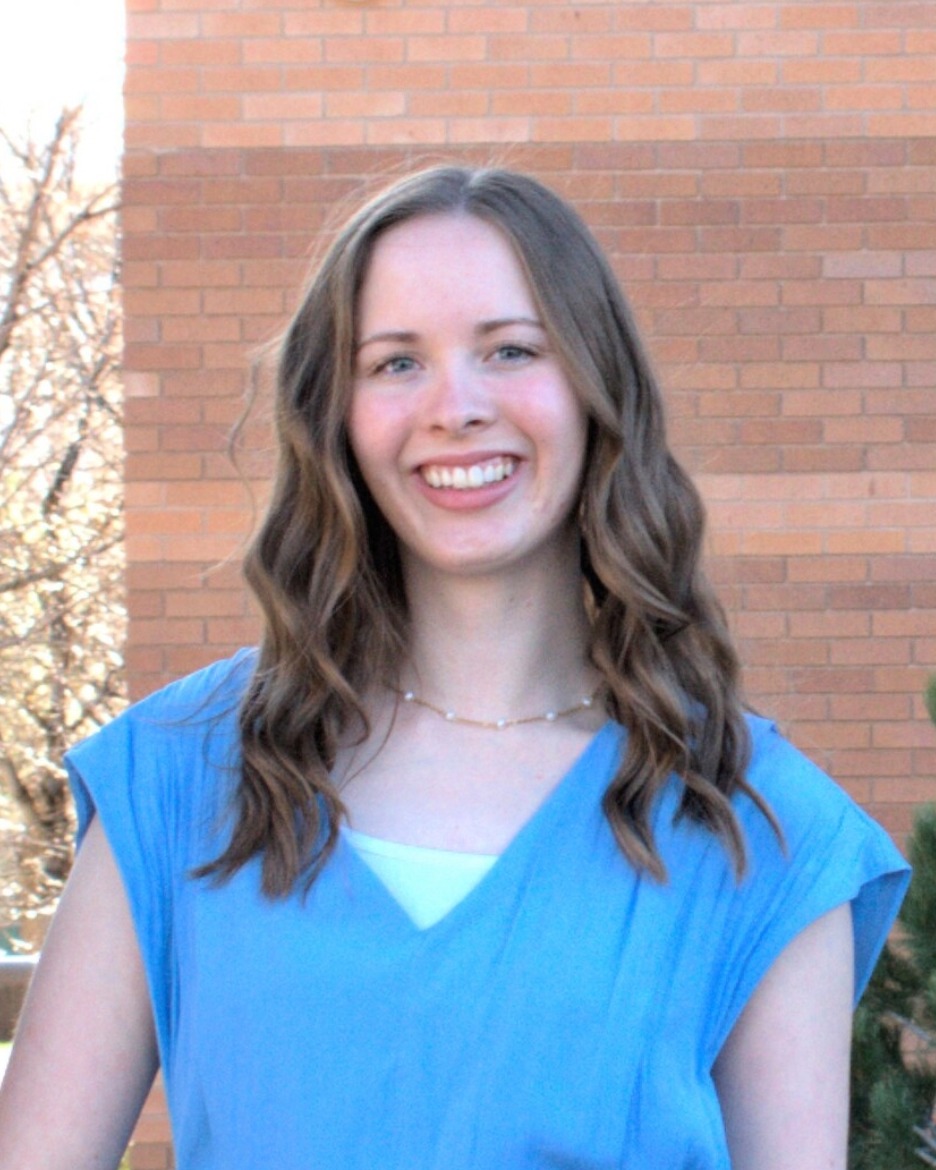 | Erica Francis - Ph.D. Student (Mechanical Engineering)Research Area: Erica's research focuses on automating the design of microfluidic devices. Her current work includes automating the design of pressure-driven, continuous-flow systems specifically applied to urinalysis assays. Additionally, Erica is working on expanding a modular component library for use with low-cost 3D printers to support affordable microfluidic manufacturing. | |
 | Fatemeh Momeni - Ph.D. Student (Mechanical Engineering)Research Area: Fatemeh's research focuses on the separation and retention behavior of per- and polyfluoroalkyl substances (PFAS) using Cyclical Electrical Field Flow Fractionation (CyElFFF). Fatemeh applies alternating electric fields in microfluidic channels to study how different PFAS compounds—based on their chain length, charge, and functional groups—respond under varying field conditions. The goal of my work is to develop efficient, low-waste methods for detecting and analyzing PFAS, contributing to improved strategies for environmental monitoring and contaminant removal. | |
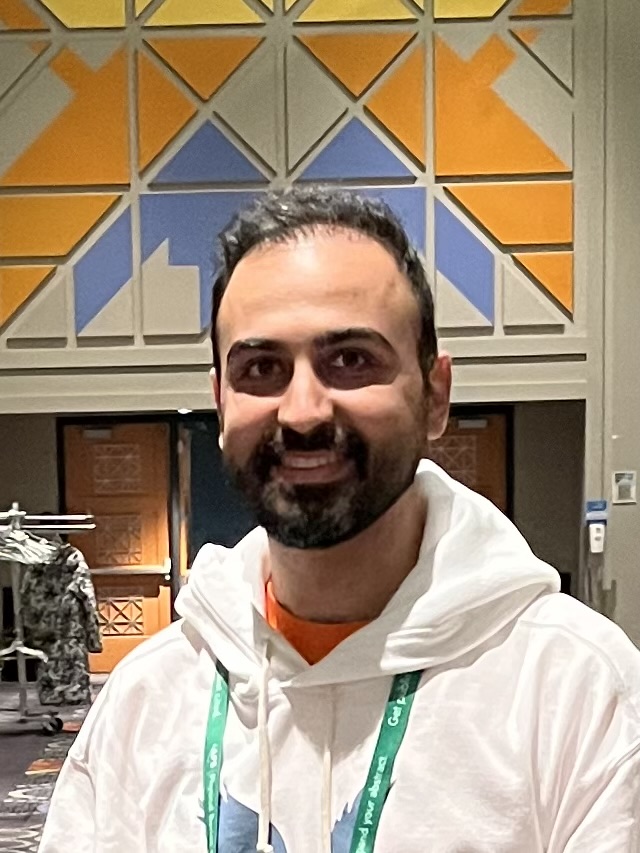 | Ali Tahmasbizadeh - Ph.D. Student (Mechanical Engineering)Research Area: Ali’s research centers on microfluidic design automation. He builds a component-based framework that turns high-fidelity simulations of pneumatic membrane valves and serpentine channels into compact design equations using custom code for model fitting and validation, enabling fast system-level simulation, layout, and optimization. This work powers the MFDA (Microfluidic Design Automation) project, and he is now implementing digital microfluidics automation within MFDA. | |
 | Camden Long, M.S. - Ph.D. Student (Biomedical Engineering)Research Area: Camden is working to develop an implantable device for the delivery of chemotherapy agents after the excision of glioblastomas. | |
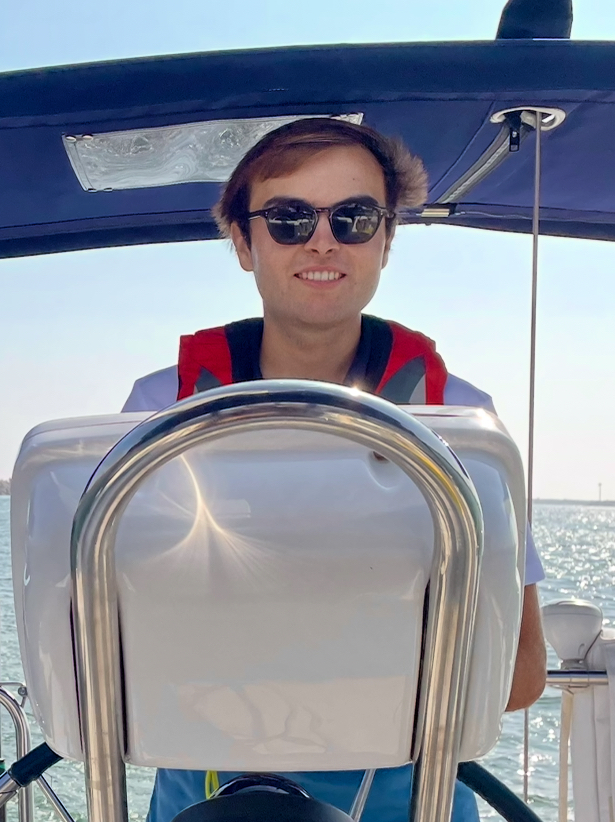 | Forest Siewert - Ph.D. Student (Mechanical Engineering)Research Area: Forest is researching the integration of pneumatic digital control with microfluidic devices using our Microfluidic Device Automation (MFDA) software. Their work focuses on developing reliable methods for interfacing control systems with microfluidic platforms. In addition, Forest is working on further development of low-cost digital microfluidic devices designed for large-scale testing of clinical specimens. These research projects combine hardware, software, and system integration of microfluidic devices. | |
 | Zachary WachResearch Area: With a B.S. in Materials Science from Johns Hopkins University and academic background in mathematics, bioengineering, biomaterials, and nanotechnology, Zachary has completed 200+ undergraduate and 40+ graduate credits while conducting research across 5 departments in 7 labs. Zachary’s interdisciplinary work spans neuro-oncology, nanomedicine, and electromagnetic simulation, and they are currently developing Faraday Finder—a social network platform for research labs. Zachary aims to integrate machine learning, nanoelectronics, and scientific creativity to address complex global challenges in medicine, energy, and computing. | |
Current Undergraduate Students |
||
|---|---|---|
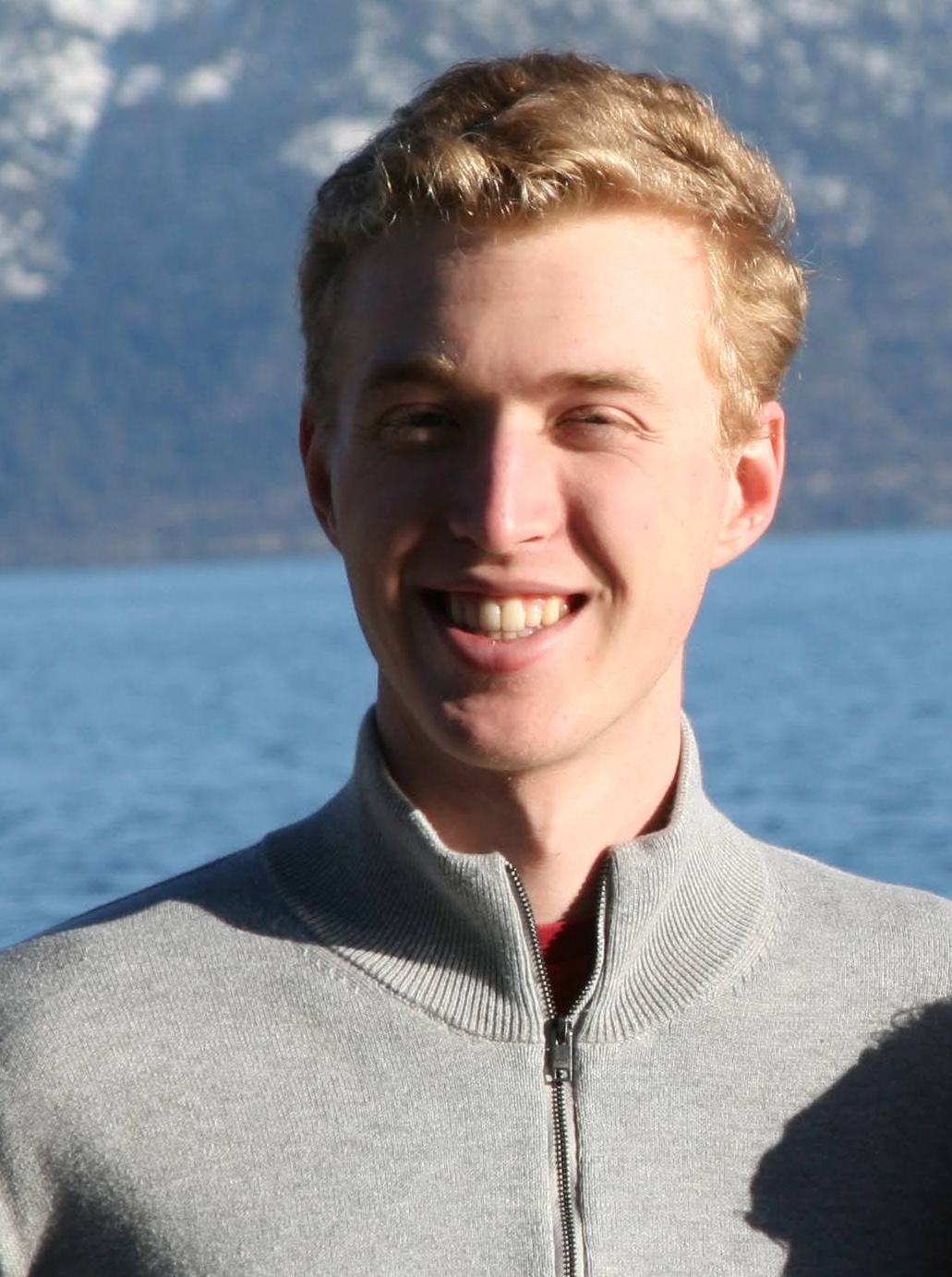 | Renner Jones - Undergraduate (Mechanical Engineering)Research Area: Renner's research focuses on optimization and compatibility of 3D printers to create automated microfluidic devices. Renner also is working on developing a virtual validation method for automated microfluidics. |
|
| Name | Thesis Topic | Degree | Dept. | Defense Date | |
|---|---|---|---|---|---|
| 1 | Nithin Narayan | Microscale SPLITT Fractionation | MS | ME | Aug 2004 |
| 2 | Aju Badardeen | Oxygen Sensing Using Electrostatic Layer by layer Assembly | MS | ME | Dec 2004 |
| 3 | David Chang-yen | Design of Microscale Fluidic Sensing Arrays | PhD | ME | Apr 2005 |
| 4 | Ameya Kantak | Microscale Cyclical Electrical Field Flow Fractionation | PhD | ME | Jul 2005 |
| 5 | Rajesh Gopalakrishnan | Nanoassembled Glucose Sensing | MS | ECE | Nov 2005 |
| 6 | Siddharth Chakravarthy | Polymerized Liposome Analysis with FFF | MS | ME | Dec 2005 |
| 7 | Ryan Sincic | DNA Extraction from Cancer Cells | MS | Bioen | May 2006 |
| 8 | Casey Pehrson | Microneedle Arrays | MS | ME | May 2006 |
| 9 | Josh Eckman | Microfluidic Spotter Design | MS | ME | Dec 2006 |
| 10 | John Maxwell | Integrated Electronics and Pneumatics | MS | ME | Aug 2007 |
| 11 | Tammy Ho | A Novel Paraffin-Based Microactuator | MS | Bioen | Dec 2007 |
| 12 | Sriram Natarajan | High Density Biomolecule Spotting Systems | PhD | ChemE | Apr 2008 |
| 13 | Niel Crews | Ultra High Speed DNA Analysis | PhD | ME | May 2008 |
| 14 | Himanshu Sant | Microscale Field flow Fractionation | PhD | Bioen | Jun 2008 |
| 15 | Mark Eddings | Integrated Biomolecule Spotting Systems | PhD | Bioen | Aug 2008 |
| 16 | Jungkyu Kim | Integrated High Desity DNA Extraction and Analysis | PhD | Bioen | Sep 2008 |
| 17 | Clint Holtey | Microvalves Integrated into Printed Circuit Boards | MS | ME | Dec 2008 |
| 18 | Merugu Srinivas | Modeling of Cyclical Electrical Field Flow Fractionation | PhD | ECE | Apr 2009 |
| 19 | Rahul Sonkul | Hybrid PDMS/PMMA Microfluidic Systems | MS | ME | May 2009 |
| 20 | Rajesh Surapaneni | DNA Extraction | MS | ME | Dec 2009 |
| 21 | Rohit Sharma | Real Time DNA Extraction Measurement | MS | ME | Dec 2009 |
| 22 | Venu Arremsetty | Microscale Flow SPLITT System | MS | ME | May 2010 |
| 23 | Austin Welborn | Modeling of microfluidic eye implants | MS | ME | Aug 2010 |
| 24 | Scott Sundberg | High density arrays for Homogenous RT-PCR | PhD | Bioen | Dec 2010 |
| 25 | Doug Anjewierden | Electrostatic Integrated Valves for Microfluidics | MS | ME | May 2011 |
| 26 | Keng-Min Lin | A Novel Drug Delivery Device for the Eye | MS | ME | May 2011 |
| 27 | Erik Liddiard | Microfluidic Worm Sorting | MS | Bioen | Aug 2011 |
| 28 | Victoria Ragsdale | Heat Transfer Analysis of Polymers for Flow PCR | MS | ME | Dec 2011 |
| 29 | Cody Gehrke | Vascular Coupling Device | MS | ME | May 2012 |
| 30 | Onur Tasci | Nanoparticle Characterization using Electrical FFF | PhD | Bioen | May 2013 |
| 31 | BJ Minson | Polycarbonate Microfluidic DNA Analysis Systems | MS | ME | May 2013 |
| 32 | Nathan Gooch (co) | Intraocular Drug Delivery Device | PhD | Bioen | May 2013 |
| 33 | Michael Johnson | Microfluidic Systems for Rapid Biological Assays | PhD | ME | Aug 2013 |
| 34 | Raheel Samuel | Microfluidic Systems for Neurotechnology | PhD | ME | Apr 2014 |
| 35 | Keng Min Lin | Miniature Drug Delivery Devices | PhD | ME | Apr 2014 |
| 36 | Harikrishnan Jayamohan | Nanoscale Bacteria Sensing Systems | PhD | ME | May 2015 |
| 37 | Huizhong Li | A Vascular Coupling Device | PhD | ME | May 2015 |
| 38 | Greg Liddiard | Electrostatic Actuated Valves | MS | ME | May 2015 |
| 39 | Scott Ho | Manufacture of Nerve Regeneration Devices | MS | ME | Jun 2015 |
| 40 | Russ Reid | Contact Lens Biofuel Cell | PhD | ME | Dec 2015 |
| 41 | Jiyoung Son | Microfluidic Cell Separations | PhD | ECE | May 2017 |
| 42 | Pratima Labroo | Nerve Regeneration Devices | PhD | ME | May 2017 |
| 43 | Ryan Brewster | PLGA Vessel Anastomosis | MS | ME | May 2017 |
| 44 | Kevin Petersen | Exosome Separations | PhD | ME | May 2018 |
| 45 | Arlen Chung | Zebrafish Genotyping Chip Optimization | MS | ME | May 2018 |
| 46 | Valentin Romanov | Synthesis of lipid vesicles and other biological assays enabled by advanced rapid prototyping techniques | PhD | ME | Dec 2018 |
| 47 | Marzieh Chaharlang | separation dynamics of bio-particles | PhD | Physics | Nov 2019 |
| 48 | Haidong Feng | PARTICLE MANIPULATION AND SEPARATION IN INERTIAL AND VISCOELASTIC FLOW | PhD | ME | May 2020 |
| 49 | Alex Jafek | A MICROFLUIDIC, AUTOMATED INSTRUMENT TO IMPROVE CLINICAL SPERM PREPARATIONS | PhD | ME | May 2020 |
| 50 | John Nelson | FURTHER DEVELOPMENT OF A VASCULAR COUPLER FOR MICROSURGERY: CONSIDERING SIZE AND SAFETY | MS | ME | Aug 2020 |
| 51 | Ugochuckwu Nze | SAMPLE PREPERATION DEVICES FOR ENHANCED AND RAPID DETECTION OF FOOD/WATERBORNE PATHOGENS | PhD | ME | Dec 2020 |
| 52 | Brett Davis | LOCAL FK506-DELIVERING NERVE WRAP FOR TREATMENT OF PERIPHERAL NERVE INJURIES | PhD | ME | May 2021 |
| 53 | Mike Beeman | Rapid and Sensitive Electrochemical Detection of Bacteria Using a Field Deployable Automated System | PhD | ME | May 2021 |
| 54 | Susan Wojtalewicz | MS | ME | Dec 2021 | |
| 55 | Dhruv Patel | PhD | ME | Dec 2022 | |
| 56 | Tawsif Mahmood | Electrochemical and Flow-Based Techniques for Food and Water Safety | PhD | ME | May 2023 |
| 57 | Utpal Saha | PhD | EE | May 2023 | |
| 58 | Nusrat Tazin | PhD | EE | ||
| 59 | Chris Lambert | PhD | ME | Aug 2023 |
SPRING 2019
“The Zipper” Zebrafish Dispenser – Medical researchers have requested a device to increase the time efficiency of transferring zebrafish from a petri dish to individual wells. Currently researchers use 5mL disposable pipettes to individually “hunt” down zebrafish and transfer each one to their assigned well; which is time and labor intensive. The goal for this project is to design a fully automated device that is able to dispense zebrafish individually from a large group of fish. The dispensing device dispenses embryos using a syringe pump and a photo sensor to sense fish passing through the dispensing channel. (“The Zipper” Zebrafish Dispenser Poster)
- Team: Dan Lee, Hanna Nizam, Brett Reeder (lead)
- Advisor: Dr. Bruce Gale
Fall 2018
96 Channel Pump Array: Development of new biologic therapies can cost, on average, $2.6 billion, can take 10 years for development, and many do not even make it through clinical trials to market. Carterra hopes to significantly reduce cost and time while increasing success rates with a new testing procedure that would develop a database of effects between antibodies and antigens for pharmaceutical research. This procedure would make use of microfluidic technology developed at the University of Utah. Current technology can handle 96 samples at a single time; however, because the device can handle so many samples, the company and microfluids lab require a cost-effective pumping solution for their device. In addition to a low cost, the pump needs to produce flow rates between 5-200 µL/min with very little pressure noise.
Our group developed a novel solution we call the Constant Contact peristaltic Pump (or CCPP). The CCPP smashes medical tubing between rollers to produce flow. By innovating on current pumping solutions, we have made high volume microfluid pumping cheaper and more effective than similar products on the market today. (96 Channel Pump Array Poster)
- Team: Joseph blash, Brian Lee, Joseph Blash, Connor Wade (lead)
- Advisors: Dr. Bruce Gale, Brady Goenner
Biomedical Device Development for Andology Clinics: One in six couples of reproductive age worldwide are affected by some form of infertility. Procedures to initiate pregnancy such as intrauterine insemination (IUI) and in vitro insemination (IVF) require several semen preparation steps. These current techniques are time consuming, expensive, may lose viable sperm, may cause damage to sperm, and involve human interaction steps that can lead to error. The collection of these problems drives a demand for a solution of a faster, simpler, and gentler technique that allows for a higher recovery of quality sperm.
The Microfluidics Lab at the University of Utah has developed a microfluidic chip that separates particulates in micro-channels which can be used for separating sperm from semen and can do so much faster than current techniques. The goal of this project is to develop a device that that will implement this new technology and automate the multi-step semen separation process, preparing semen samples for intrauterine insemination and in vitro fertilization. (Biomedical Device Development for Andology Clinics Poster)
- Team: Dan Folsom (lead), Cameron Hendricks, Jaron Ortega, Mitch Shepherd, Trevor Teerlink
- Advisor: Dr. Bruce Gale
SPRING 2017
Affordable Insulin Pump: To maintain their health and current lifestyle, people with Type I Diabetes use an insulin pump to control and maintain their blood sugar throughout the day. Our team has been working on making an insulin pump that is less expensive than the current model, but just as safe and accurate at delivering insulin to the patient. We accomplished this by designing a kit assembly model that will be more affordable, customizable, and allow for individual part replacement. Patients will no longer need to replace the entire pump if one part fails. (Affordable Insulin Pump Poster)
- Team: Cherry Gregory, Young-Jun Jeon, Joshua Stubbs, McKayla Whitehead (lead)
- Advisor: Dr. Bruce Gale
Automated Stem Cell Separation: The Automated Stem Cell Separator group developed a mechanical device for separating stem cell from human adipose (fat) cells so that the stem cells can then be used for medical treatment and reintroduced to the same patient. A mechanical approach was used to meet FDA regulations. Specifically, a fluid cavitation process, which creates small shockwaves resulting from a swift change in pressure within the device, was used to break apart the adipose tissue and detach the cells from the surrounding fat. Multiple designs of the device were fabricated and tested to determine an optimal design that could be incorporated into a full system that separates the stem cells for subsequent reintroduction into the patient. (Automated Stem Cell Separation Poster)
- Team: Travis Gowen, Joelle Hardy, Nelson Nieto, Brianna Potter, Megan Roach (lead)
- Advisors: Drs. Bruce Gale, Himanshu Sant
SPRING 2016
96 Channel Microfluidic Pump: Wasatch Microfluidics needs to replace their microfluidic pump system. The 96 Channel Pump Team plans to develop a simplified multi-channel pump designed to address the customer’s needs. To overcome the deficiencies of the existing design, the designed device will include a simplified pump system, material that is compatible with the fluids to be pumped, and a storage location for the fluid. The pump will use the precious fluid instead of air as the driving fluid, thus increasing volumetric flow accuracy. The designed pump system will consist of 96 channels that will be able to aspirate or dispense simultaneously. Wasatch Microfluidics needs a single, compact, relatively inexpensive, non-contaminating, highly accurate pump system capable of pumping 96 samples simultaneously. (96 Channel Microfluidic Pump poster)
- Team: Brian Butler, Rodolfo Garcia, Tanner Hatch (lead), Bryan Luke
- Advisor: Dr. Bruce Gale
Automated Stem Cell Separation: The function of the Automated Stem Cell Separator(ASCS) is to remove the Stromal Vascular Fraction(SVF) from harvested adipose tissue. The ASCS is a completely mechanical device that creates a pressure drop to induce hydrodynamic cavitation which breaks down the adipose tissue structure allowing for the separation of the SVF. (Automated Stem Cell Separation poster)
- Team: Anthony Berceau, Tyler Crouse, Justin Fawson (lead), Jesse Hanson, Zachary kelly, Agustus Schwab
- Advisor: Dr. Himanshu Sant
Inflatable Shorts: For many quadriplegics and paraplegics bedsores, also known as pressure sores are a serious threat to overall health and quality of life. Bedsores are the breakdown of skin and underlying tissue due to prolonged pressure on a concentrated point. Bedsores are most often developed around Ischial and hip bones. In current hospital settings solutions to mitigating the development of bed sores are limited to specialty beds that alternate inflatable sections to increase surface area and reduce overall pressure experienced by the individual. For those in wheel chairs there are some fairly effectively bedsore mitigation devices, however, they are limited to a sit-in cushion design and are extremely costly. The inflatable shorts team goal is to develop a wearable pair of shorts that will mitigate the development of bedsores wherever the patient is sitting. (Inflatable Shorts poster)
- Team: Sean Jones, Shem Lemmon, Grant Mendenhall, Michael Pfeil, Alex Zvirzdin (lead)
- Advisor: Dr. Himanshu Sant
Rising Toilet Seat: Many elderly and persons with disabilities struggle to get on and off the toilet by themselves forcing them to give up their independence and move to care facilities. There are currently passive devices such as toilet seat boosters and handrails that provide assistance with this task, but they are often inadequate. Several active lifting devices are available, but these devices are electric powered, which requires the user to run a power cord through the bathroom, because outlets are typically not located near the toilet. Another drawback is that these devices are too wide for many residential bathrooms therefore requiring renovation to install. The Rising Toilet Seat Team is addressing these problems by creating a hydraulic powered lift device. The device mounts in place of the toilet seat and uses the existing toilet water supply line for power. The water usage is small and the water is drained into the toilet tank so that it can be later used for flushing. No power outlet is required and the device is small enough to fit in the majority of bathrooms without any renovation. (Rising Toilet Seat poster)
- Team: Khoa Dinh, Jose Garcia, Cody Mitchell (lead), Brandon Wilstead
- Advisors: Drs. Bala Ambati, Bruce Gale
SPRING 2015
BIO-SENSING CHIP: The Bio-Sensing Chip is an early-warning system designed to detect diseases in the initial stages. The device is a proof of concept project that might eventually be implanted into the human body to alert the patient to seek medical attention before the disease fully develops. It detects disease by identifying biomarkers that become present in the bloodstream as a result of a disease. Biomarkers are biological responses to disease, infection, and other phenomena. The quantity of biomarkers in a person’s body relate to the advancement of the disease. Additionally, the Bio-Sensing Chip can detect biomarkers by chemically attaching them to microspheres. The quantity of these microspheres can be measured and correlated to the stage of a disease. The user of the device can then be alerted to the presence of the disease and seek further medical care. (Bio-Sensing Chip Poster)
- Team: Rachel Ware (lead), Sarah Bentley, Jaron Peck, Parker Vance
- Advisor: Dr. Bruce Gale
SPRING 2013
Mechanical Leech: The Mechanical Leech will be a drop-in replacement for biological leeches, providing the necessary fluid removal that is needed during post-surgical skin graft treatment. Live leeches are currently used during post-surgical skin graft procedures to remove pooling blood at the surgical sites. This gives the body time to form new veins to handle the return blood flow. These biological leeches have drawbacks such as sanitation and patient appeal, which will be resolved using the Mechanical Leech that is an aesthetically pleasing, sterilizable replacement.
- Team: Andy Thompson (lead), Jessica Kuhlman, Ladan Jiracek, Scott Ho, and Victor Walker
- Advisor: Bruce Gale, Ph.D.
